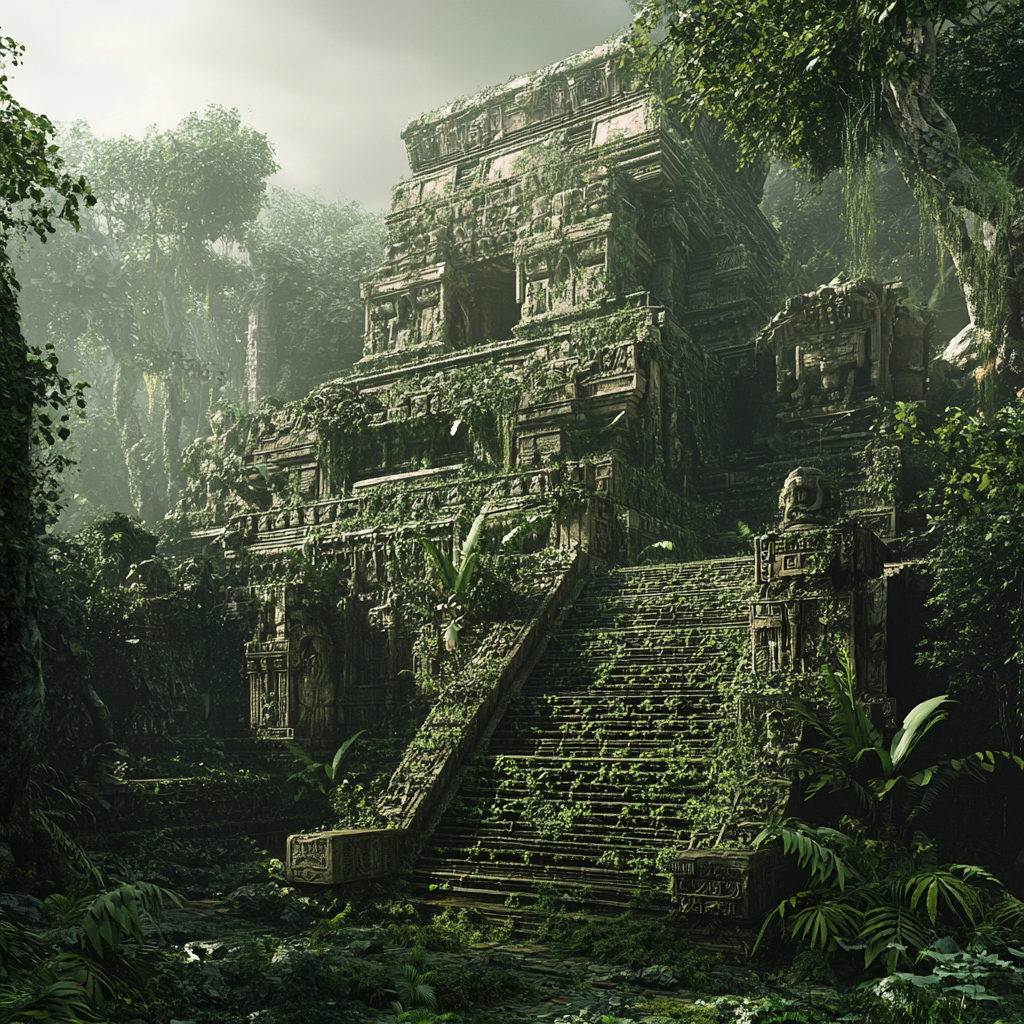Lost Civilizations and the Erased Chapters of Human History
History likes to pretend it has all the answers. Neatly organized timelines, grand narratives of human progress, and clear distinctions between what is considered legend and what is accepted as fact. But peel back the carefully placed layers, and you’ll find that the so-called “complete history of humanity” is anything but.
Entire civilizations have vanished without explanation. Monumental structures remain that our most advanced technologies struggle to replicate. Knowledge systems have disappeared, their secrets lost not to the slow erosion of time, but to the violent and deliberate hands of those who sought to control the human story.
These are the erased chapters of human history, and they raise a question we’re taught never to ask: What if our ancestors were far more advanced—intellectually, spiritually, and technologically—than we’ve been led to believe?
No discussion of erased history begins without mentioning the Library of Alexandria. Romanticized today as a tragic loss, few realize the extent of what was truly destroyed. Estimates suggest the library contained over 400,000 scrolls and manuscripts—a knowledge base compiled from every known civilization of its time, including works from Egypt, Mesopotamia, India, Greece, China, and beyond.
Image Credit: Midjourney AI
But this wasn’t just a collection of poetry and philosophical musings. The lost texts are rumored to have included advanced medical treatises, forgotten branches of mathematics, detailed astronomical charts, and technologies centuries ahead of their time. There are even whispers that blueprints for steam-powered devices—engines long before the Industrial Revolution—were among them.
We don’t mourn this loss nearly enough. When the flames consumed the Library of Alexandria, they didn’t just erase our past; they may have delayed our future by centuries. Imagine a world where the scientific revolutions of the 18th and 19th centuries happened a thousand years earlier. What would the world look like now if humanity had never been forced to reinvent what it had already discovered?
Buried under layers of earth for nearly 10,000 years, Göbekli Tepe was discovered in the 1990s in what is now southeastern Turkey. Its existence shattered everything we thought we knew about early human civilization.
This ancient site predates Stonehenge by over 6,000 years. Its massive T-shaped limestone pillars, some weighing up to 20 tons, are intricately carved with animals and abstract symbols. Yet, this complex was built during a time when humans were supposedly still roaming as small bands of hunter-gatherers, lacking the organizational structure or engineering skills to build something so sophisticated.
Why would early humans build a monumental site and then deliberately bury it under thousands of tons of soil? Was it an attempt to preserve it against some approaching cataclysm? Or perhaps it marked the end of a forgotten golden age, a time of advanced spiritual and technological knowledge we can only glimpse through these buried stones?
And the real question—if Göbekli Tepe survived hidden beneath the earth for millennia, how many other sites have been lost forever?
Hidden in the middle of the Pacific Ocean on the island of Pohnpei lies Nan Madol, a city built entirely on coral reefs and artificial stone islands. Its enormous basalt logs—some weighing as much as 50 tons each—were stacked with a precision that baffles modern engineers.
Local legends claim the stones were moved by magic, carried effortlessly through the air by a forgotten technology or power. Western historians dismiss this as myth, but no satisfactory explanation has ever been given for how such a small, isolated population moved and arranged these monolithic stones.
Nan Madol isn’t the only oceanic mystery. Across the Pacific and Indian Oceans, there are submerged ruins of entire cities, their remains found under the waves near India, Japan, and the Caribbean. These ruins suggest that rising sea levels or sudden cataclysms wiped out coastal civilizations thousands of years before our earliest known societies even emerged.
In the high Andes of Peru, the fortress walls of Sacsayhuamán stand as silent, defiant challenges to modern science. The stones—some weighing over 100 tons—fit together so precisely that not even a piece of paper can slide between them.
No mortar was used. The surfaces of the stones are curved and irregular, yet they interlock in a way that has withstood earthquakes for centuries. Modern attempts to replicate these techniques have failed miserably.
Were these stones cut and placed using a lost technology? Some theorists suggest the ancient Inca—or a civilization that came before them—possessed vibrational tools capable of softening stone. Others believe the stones were moved using forgotten energy systems, perhaps even forms of acoustic levitation or electromagnetic manipulation.
If that sounds like science fiction, consider this: we’ve only recently rediscovered how certain frequencies can manipulate matter. What if the ancients knew this long before we did?
History is often written by the victors, but it’s also carefully edited by them. Empires rise, and with them comes the need to control not just land, but memory.
When the Spanish conquered the Americas, they didn’t just destroy temples and plunder cities—they systematically burned the codices and sacred texts of the Maya and Aztec civilizations. The vast majority of written knowledge from these highly advanced cultures vanished in the flames.
Image Credit: Midjourney AI
In Europe, the Church spent centuries branding anything outside its doctrine as heresy. Whole systems of medicine, knowledge of natural remedies, and ancient spiritual practices were lost under the label of witchcraft.
And today, our erasure continues—not through fire, but through distraction and dismissal. We live in a time where ancient anomalies are brushed aside with half-hearted explanations. Where knowledge is drowned in the noise of entertainment and endless information streams.
The forgotten civilizations of our past aren’t just fascinating mysteries—they are warnings. They remind us that progress is not linear. That societies can—and have—reached heights of understanding and collapsed back into darkness.
So, ask yourself: Are we standing at the peak of human advancement—or on the precipice of forgetting again?
Because if history teaches us anything, it’s that forgetting is easier than remembering. And unless we fight to uncover the truth hidden beneath the sand, the seas, and the ruins—we risk losing the very knowledge that could save us from repeating the same devastating cycle.
Plato’s tale of Atlantis is often dismissed as pure allegory, a philosophical metaphor about the dangers of hubris and unchecked ambition. But what if it wasn’t entirely fictional? What if it was a distorted memory of a real civilization that rose to unimaginable heights before vanishing beneath the waves?
Plato described Atlantis as a powerful and technologically advanced society that existed 9,000 years before his time—a timeline that, coincidentally, aligns closely with the end of the last Ice Age and the mysterious event known as the Younger Dryas.
Atlantis is said to have possessed technologies and knowledge that surpassed even the greatest empires of recorded history. Its downfall came not from external enemies, but from internal decay—greed, corruption, and a disconnection from the spiritual values that once guided its people.
Many believe Atlantis could be connected to the sunken ruins found off the coasts of India, Japan, and even Cuba. Underwater cities that date back to a time when, according to conventional history, humans were supposedly incapable of building such marvels.
But why does this legend persist so strongly? And why do similar flood myths—epic stories of advanced civilizations destroyed by water—exist in nearly every ancient culture, from the biblical tale of Noah to the Sumerian story of Ziusudra?
Roughly 12,800 years ago, something extraordinary and catastrophic happened. Global temperatures plummeted, megafauna like mammoths and saber-toothed cats disappeared, and human civilizations seemingly hit a massive reset.
This period, known as the Younger Dryas, is believed by some scientists to have been triggered by a comet or asteroid impact. The Younger Dryas Impact Hypothesis suggests that fragments of a comet struck the Earth, causing widespread fires, flooding from rapid glacial melt, and a sudden climate shift.
If this event did occur, it could explain the sudden disappearance of advanced cultures—those who may have thrived along coastlines now buried beneath rising seas. It also adds weight to the possibility that myths of global floods and lost civilizations like Atlantis aren’t just symbolic—they’re fragmented memories of a real, global disaster passed down through oral traditions.
Sites like Göbekli Tepe rise suspiciously soon after this event, almost as if survivors of a destroyed civilization were trying to rebuild, preserve knowledge, or mark a new beginning.
The Sumerian Kings List is one of the most baffling documents in all of ancient history. Carved onto stone tablets, this list details the kings who ruled Sumer before the “Great Flood.”
But here’s where things get strange: the earliest kings are recorded as having reigned for tens of thousands of years. One ruler, Alulim, is said to have reigned for 28,800 years.
Mainstream historians chalk this up to mythology or mistranslation, but what if these records weren’t meant to be taken metaphorically? Some researchers suggest that the kings list preserves the memory of an age when humans—or beings that walked among humans—possessed far longer lifespans or greater capabilities than we currently understand.
Is it possible that the so-called gods of ancient mythology were real rulers of advanced societies, later deified by those who couldn’t comprehend their knowledge and power?
And if so, where did they go? Did they perish in the cataclysms of the Younger Dryas? Did their civilizations sink beneath rising oceans, their cities now lying silent on the ocean floor?
Every ruin, every submerged city, every inexplicable artifact is a reminder that we’re missing something. That the chapters of human history still hidden or erased are not just about the past—they hold crucial lessons for our future.
Because if we have forgotten the rise and fall of truly advanced civilizations before us, how confident are we that we’re not standing at the edge of the same collapse?
And maybe… just maybe… the greatest mystery of all isn’t what was lost, but why it was hidden.
If You Loved This, You’ll Love These Too:
Have You Heard The Latest Episode of GBRLIFE of Crimes?
GBRLIFE has so much more:












